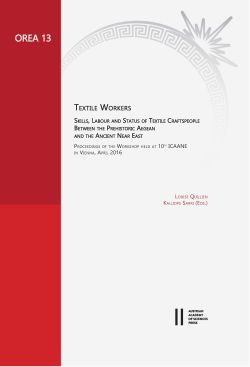
Textile Workers. Skills, Labour and Status of Textile Craftspeople Between the Prehistoric Aegean and the Ancient Near East, pp. 127-138, 2020/04/30
Proceedings of the Workshop held at 10th ICAANE in Vienna, April 2016
The 18th-century-BC archives excavated in the royal palace of Mari (Syria) document the management of a huge palace dated to the Middle Bronze Age. Administrative texts and letters mention the existence of a large textile industry where the majority of workers were women, mainly slaves and prisoners of war. Some women were referred to according to the type of textiles they were producing. The work of men seems to have been more specialised, and men were regularly at the head of teams of workers, receiving raw materials and delivering finished textiles and garments. However, women also supervised teams of textile workers that were usually mainly composed of women. The textile workshops were located outside of the palace walls and some included hundreds of workers. There is no archaeological evidence of these workshops at Mari. Large households belonging to high officials or private individuals could also include textile workshops.
Keywords: textile industry; Middle Bronze Age; Mari